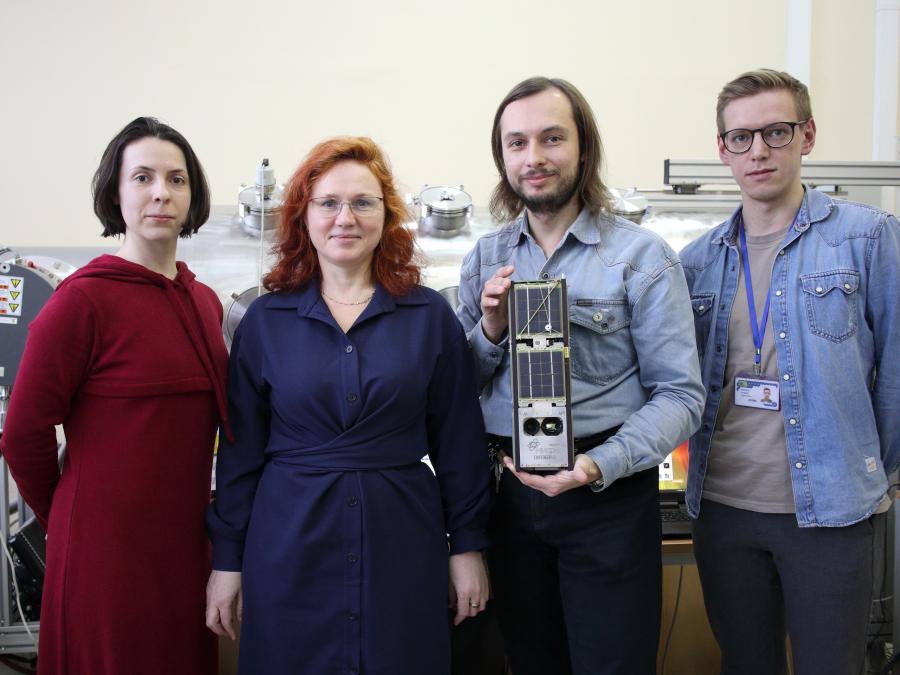Last week, fire tests of the VERA ablative pulsed plasma propulsion system with increased thrust were completed - the engine was tested for the first time as part of the Svyatobor-1 nanosatellite, which is scheduled to be launched into orbit in the first half of 2023.

MEPhI team creating the first satellite of our university
Scientists from the Institute of Laser and Plasma Technologies of the MEPhI have created a new version of the VERA plasma engine, which, with unchanged given parameters, such as restrictions on power consumption and weight, outperforms previous modifications in thrust twice. In the previous version of the engine, launched into orbit in August 2022, the average thrust did not exceed 15 µN (micronewtons), in the new engine it reaches 30 µN.
Back in the 60s of the last century, the Soviet scientist Viktor Khrabrov was able to solve the problem of creating a plasma engine with a minimum power consumption of 10 W - and in 1964 his plasma engine went into space as the first in the world. Since the Khrabrov engine was not intended for a nanosatellite, but for an interplanetary station, the size and weight restrictions for the propulsion system were less stringent. Today, the scientists of the nuclear university were faced with the task of maintaining acceptable thrust with significantly smaller dimensions and weight, while reducing the power consumption by several times - to a level of no more than 3 watts.
If in Khrabrov’s plasma engine the capacitor battery alone weighed one and a half kilograms, then for Svyatobor 1 it was necessary to lay the entire propulsion system in 500 g. For this, according to the technical consultant of the Svyatobor 1 project Igor Yegorov, a small capacitor battery was used, which inevitably led to a decrease in the discharge current in the engine, and with it a drop in efficiency. The fundamental solution to the problem was a magnetic coil, which creates a magnetic nozzle at the output of the engine, which further accelerates the plasma, and for the latest modification of the engine, which doubled the thrust, the developers changed the diameter, length and number of turns in the magnetic coil.
The working body of the engine has also changed compared to Braverov's development - instead of fluoroplastic, which chars at a low discharge current, leading to a quick engine failure, MEPhI scientists have selected a new plastic - polyacetal (polyformaldehyde), free from this drawback, since it does not have continuous carbon chain.
The creation of large satellite constellations is a global trend in astronautics, and it is also developing in Russia. But the launch of many satellites on one rocket gives rise to a number of problems, in particular, after launch, all satellites fly in one compact group. For effective joint work, nanosatellites must be distributed in orbit at a certain distance from each other, which is why a new engine is needed, which will allow forming a constellation with the correct configuration.
Now the Svyatobor-1 nanosatellite is being prepared for vibration and thermal vacuum tests, and its creators, at the request of Sputniks, are already working on a new version of the ablative pulsed plasma engine, in which a different electrode geometry will be used - rail rather than coaxial. This will allow more efficient use of the working fluid, accelerating the plasma to a higher speed. Of course, you will have to “pay” for the high speed of the plasma by increasing power consumption, but now this is not a problem - up to 100 W of power is allocated to the engine.





